- | 10:00 am
Elon Musk just built the Hyperloop’s grave
Maybe Elon Musk should have skipped the Hyperloop and built parking lots instead.
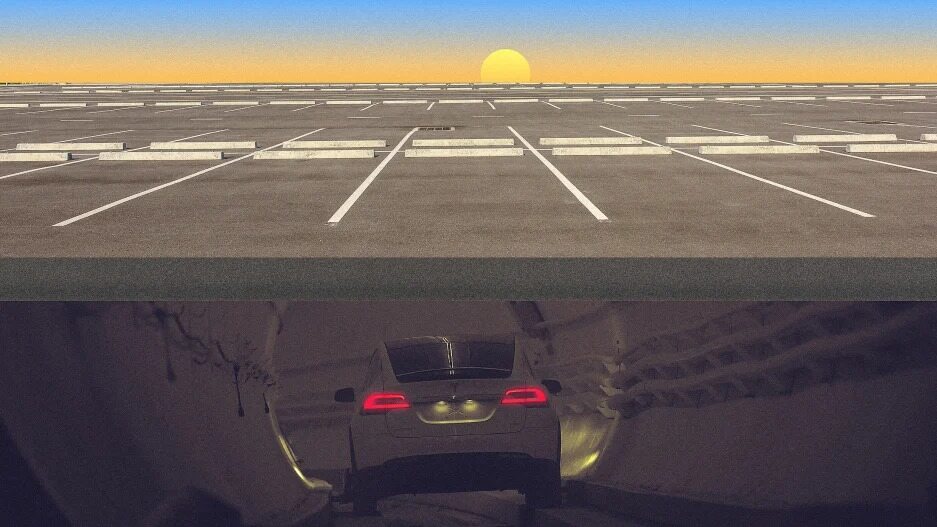
A decade ago, Elon Musk told the world that the transportation of the future would include 600 mph trains inside tubes. Glass tubes. Steel tubes. Concrete tubes. One tube going everywhere, connecting cities and towns. He built a mile of it by his SpaceX headquarters in California to test his literal pipe dream, which he touted as the transit revolution he would use to travel through his Mars empire.
But like many of Musk’s ideas, this one was proven wrong. Today—after more than a billion dollars of investment burned by nine startups and Musk himself—the only loops you can do where Musk’s Hyperloop once stood are donuts. The test loop has reportedly been turned into a parking lot, an unintended memorial to a terrible idea.
The Hyperloop, in case you forgot about it, was the unholy child of the Monorail from The Simpsons and a pneumatic tube. It was supposed to make long-distance and city travel as convenient as the subway and as fast as an airplane, with bullet-like cars traveling inside vacuums illuminated by fancy LEDs, as shown by Virgin Hyperloop’s test below. A trip from Washington, D.C., to New York in one of these 600 mph trains “would take less than 30 minutes,” according to Musk.
The idea isn’t new or particularly modern. The original was designed in 1812 by English mechanical engineer and inventor George Medhurst, who first published his “Plan for the Rapid Conveyance of Goods and Passengers Upon an Iron Road Through a Tube of 30 Feet in Area by the Power and Velocity of Air.” Musk published his own paper in 2013, describing a modernized “Hyperloop” and “allowing” anyone to implement it for free.
PLENTY OF ROADKILL IN THIS LOOP
Everyone in the world went ooh, aah. Musk even sponsored a design competition for students and hobbyists from 2015 to 2019 to realize his dream. In 2016, SpaceX built the now-destroyed test Hypertube in California.
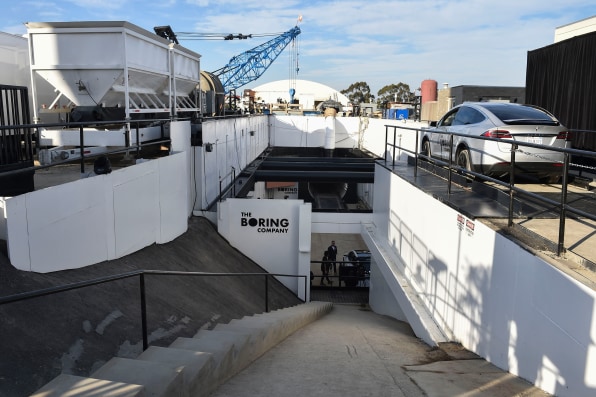
A lot of bad has happened since then. The idea itself was slammed in countless rebuttals—ranging from astrophysicist critique to political punditry—which rightly predicted it was practically doomed from the start. There were even papers debunking the science myths behind Musk’s idea.
Still, plenty of people fawned over the open-source plan, founding startups to take over the future of transportation according to the Martian prophet himself.
One of those startups was HyperloopTT, a company that has been struggling with the realities of bringing these pharaonic projects to fruition. Even its small-scale projects have failed time and again. In 2017, the company promised an operative 10-kilometer Hyperloop system in Dubai by 2020, which didn’t materialize by that date (but hey, awesome renders!). In 2018, a new agreement was signed, which promised a fully functioning track by 2023 (nothing yet, but more renders!). There were also “potential deals” in India and China but, according to an AFP report published in July 2022, “none of these projects has come to fruition.”
The sad thing is that the Hyperloop seemed doomed years before the AFP report. Back in 2020, HyperloopTT published a peer-reviewed report that very much questioned the feasibility of the project. One example noted that the emergency braking distance would be 4 to 5 miles, compared to 820 feet for the average passenger train. “Normal stops would need 20 miles or more,” the report found—a total stopping length that’s 7 miles longer than the island of Manhattan. These systems are hardly operative in real-world situations, which mitigates any of Hyperloop’s speed advantage in short connections.
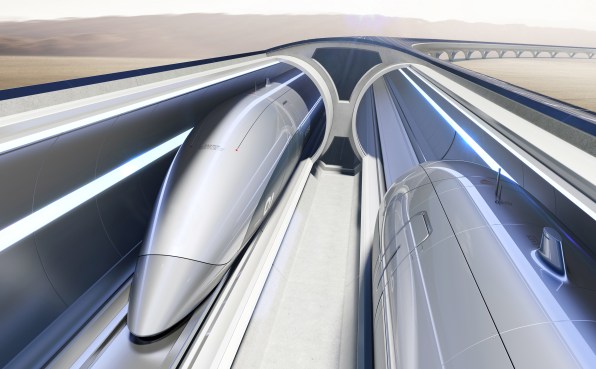
Political and economic realities have demonstrated to be just as unsurmountable as the technology itself. Musk made fun of the budget for the fabled California high-speed train, which was tagged at $81 million per mile. He claimed that the Hyperloop would cost $11.5 million per mile.
That prediction turned out to be false, too. Forbes procured leaked papers from Virgin Hyperloop One, the startup with the deepest pockets in the Hyperloop universe. Those documents claimed that a 107-mile loop around the Bay Area would cost upward of $13 billion. Even the best-case scenario put it higher than the high-speed train, at $84 million per mile. The worst case was a lot worse: $121 million per mile.
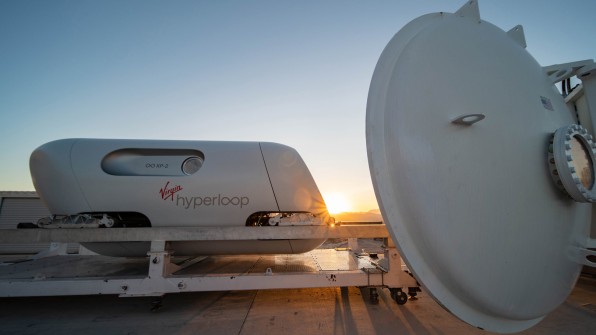
Virgin Hyperloop is owned mostly by Dubai-based giant port logistics firm DP World and, with a minority stake, Sir Richard Branson. The company got $350 million from those investments and yet, after countless tests and millions of dollars burned, it completely abandoned its project to build a Hyperloop for passengers in February 2022, axing its 200-employee force in half at the same time.
Now the startup wants to focus on cargo transport. However, as Carlo van de Weijer—director of smart mobility at Eindhoven University of Technology in the Netherlands—told The New York Times: “Most cargo takes two and a half weeks to come from China. Why do you suddenly need to move it somewhere in 10 minutes? We’re perfectly satisfied with a truck that goes 50 miles per hour.” Other experts agree that it doesn’t make any sense from a business or technical point of view. It’s no wonder that the company doesn’t have anything going on at this point except a lot of gas.
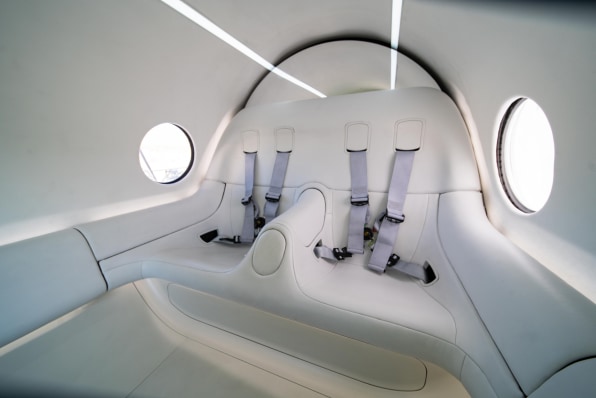
Other Hyperloop companies are either defunct—like Arrivo—or too tiny to be of any consequence, like Spanish Zeleros, Indian DGWHyperloop, and Hardt Global Mobility. Toronto-based TransPod claims to have secured $550 million to build a Hyperloop line between Calgary and Edmonton in Alberta, Canada. That’s a distance of 183 miles on a straight line, so it will need a lot more money than that. That’s with proven high-speed railway technology. Imagine something as exotic as a train in a vacuum tube. (TransPod also has a history of overpromising and not delivering.)
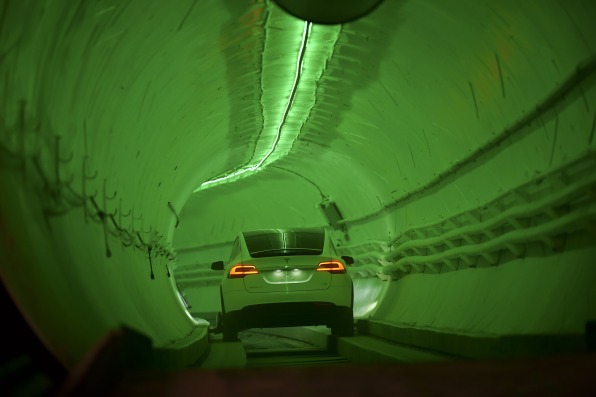
LAST CHANCE?
But wait, because while every other Hyperloop on the planet may be dead, the Boring Co. announced last April that it is going to build a full-scale “Hyperloop test.” The Boring Co., as you may remember—with Musk, it’s easy to lose track of things—is yet another one of the Chief Twit’s pet startups, which specializes in digging expensive and disappointing tunnels for people to drive Teslas under Las Vegas and that’s about it, really.
The company, as Fortune pointed out at the time, didn’t share any details whatsoever about this plan, which automatically makes it fall into potential Musk Fantasy territory. Then, in August, the space mogul posted the following on Twitter: “Now @boringcompany tunnels are in active use in Vegas. [. . .]” followed by “Would be cool to do a (much simplified) Hyperloop demo tunnel between maybe Austin & San Antonio?”
Yes, everyone can agree that seeing an actual Hyperloop in real-life practical use would be “cool.” But let’s not forget that this is the man who has promised fully autonomous self-driving cars “for next year,” every single year since 2014 (and failed to deliver each of those times).
He’s also the man who in 2017 claimed to have received “verbal government approval” to build a Hyperloop connecting New York, Philadelphia, Baltimore, and Washington, D.C., making a trip from New York to D.C. possible in just 29 minutes . . .
. . . which also turned out to be false. But who knows. Maybe the Boring Co. will surprise us with something to revitalize the dead concept. It now has $675 million in equity from private investors including Sequoia Capital and Musk’s old PayPal pal Peter Thiel. Then again, Austin to San Antonio is about 80 miles, so that’s nowhere near the money needed to build this theoretical test. Maybe the future of transportation is in supersonic parking lots.





































